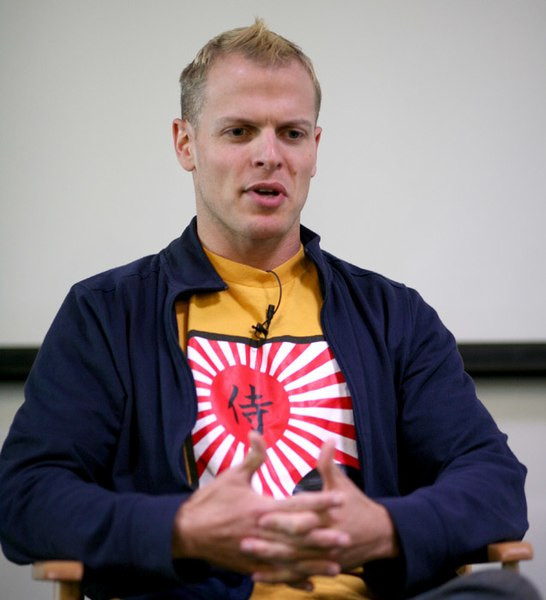There are a lot of books out there that talk about accelerated learning techniques. Some people call them “hacks” others just call them time savers. I want to talk about one such book today and give you The 4-Hour Chef Review.
This book is written by Tim Ferriss who has written a number other similarly title books, with the basic idea being “how to attain results in record time” or with minimal time, and so on.
Since this blog is about learning Japanese, I’ll talk about how the concepts specifically apply to language learning, because the book covers a much more than just that.
What Is This Book About?
The subtitle of this book is “The Simple Path to Cooking Like a Pro, Learning Anything, and Living the Good Life.”
But don’t let that fool you, this is a book that focuses on “how to learn” and it just uses cooking as the medium to deliver the message. While you will learn about some recipes, it’s really the concepts behind them that matter.
There are some sections that talk about other learning activities. One of them is of course language learning, but it talks about a lot of different languages and not just Japanese.
He also talks a lot about his journey to discovering these techniques, but the two big take-aways that I got from the book are that choosing what to study and how to study can make a big difference on how quickly you learn something.
Choosing What To Study
The book talks about choosing the right things to learn in order to get the most bang for your buck.
One example that it uses comes to vocabulary selection in relation to languages. The book says that most people who are natives in their own language know about 20,000 to 35,000 words.
But only the top 100 most common words in English account for 50% of all written materials. The point is that choosing to learn these “top 100” words first will allow you to access a lot of materials right off the bat.
Tim Ferriss goes into more details about this in the book, but the point is that you don’t need to have the vocabulary of a native to be able to use the language fluently. Tim says that all you have to learn are the top 1,200 words in a language to gain conversational fluency.
I think this is true for English and other related languages, but all of the studies that I’ve seen (and people I’ve talked to) say that Japanese takes a bit more than this.
But basic principle holds true: Active vocabulary, what you need to be fluent in conversations, is a lot smaller than passive vocabulary.
This means you can get yourself talking naturally with others quickest by studying the words and phrases that appear a lot in natural conversations.
I also remember Tim Ferriss talk about this concept in an interview once when the topic of reading Japanese came up.
He said that There are over 50,000 different kanji (Chinese characters) in the Japanese language. This is obviously way too much for most people to handle, and thankfully the vast majority of them never get used in real life.
Shaving things down considerably, you only need to learn the jōyō kanji (2,000+), in order to be literate in the language and able to read newspapers, public documents, etc.
However, Tim Ferriss said that there are only 200 kanji that account for 50% of all the kanji on Wikipedia, and just under 500 of them account for 75% of it.
So by focusing on those first, you drastically reduce the time you spend studying and still maintain a high degree of fluency.
Of course, this is assuming that you want to spend a lot of your time reading the Japanese Wikipedia, but I think the principle holds true here as well: certain kanji are more common and therefore more valuable to learn first.
Choosing How To Study

Image credit of Tim Ferris (the author): Mukhatir.
One thing I heard the author say when asked “what’s the most effective learning method?” is that the most effective method is the one you stick with.
I appreciated his candor, because I think he’s right that things like habit and attitude have a bigger impact on a person’s ability to learn than the specific method they use.
That being said, he’s got some ideas on effective methods for studying. We talked earlier about vocabulary, and in this part we can switch it over to grammar.
One of them that pertains to learning Japanese was “deconstructing the grammar” by using a list of twelve sentences that are all similar to one another, but with one important difference.
Let me just give you four of them so that you can see what I mean:
- I must eat
- I want to eat
- I’m going to eat tomorrow
- I can’t eat
By having a native friend write the equivalent to each sentence, you can see what typically stays the same and what typically changes.
For Japanese, he gives the following translations for the above sentences respectively:
- 食べる必要がある。
- 食べたい。
- 明日食べる。
- 食べることができない。
You can already see some patterns from the above short list, such as the fact that 食べる can be the same for three of the above sentences, and the main component that changes is the grammar pattern when expression things like must, can’t, and the like.
Japanese Language Tips
I’ve been talking about Japanese specific things you can do throughout this post as each concept was explained, but let me kind of compile them all here.
This will also include some stuff from the book that I haven’t specifically mentioned here.
Focus on high frequency stuff first (vocabulary, kanji, etc) in order to jump start your progress in the language.
Take a top down view of grammar patterns to see how they are similar and different from one another. This is called “deconstructing” and it can also be applied to kanji in order to help learn them better.
Find a method that you can enjoy and will stick with. The psychology of language learning is the most powerful factor that determines your end result with the language.
Grammar can also be learned implicitly through materials you naturally find interesting (Tim used judo books).
Use the Von Restorff Effect for maximum learning in specific time duration.
Be aware of how the long-term language learning process looks like (page 87 in the book) to know when to switch from beginner material to native stuff, know when to expect learning plateaus and avoid depression, and be ready for the inflection point that rockets to fluency
Where To Find It
I enjoyed reading the book and felt that there were some good ideas that could be gleaned from it. It doesn’t focus on Japanese language learning too much, so I really only read a fifth of the book or so.
If the ideas of this book sound like something you would be interested in learning more about, then you can check out the book and see what all is included.
If you’ve got any questions or comments, please let me know down below!
Further Resources for Learning Japanese:
#3 Get My eBook (Secrets to Learning Japanese) for Free

またね!

I have all of Tim’s 4 hour books. They are absolutely amazing as reference material. Is the 4 hour Chef your favourite?
I have to admit, I haven’t read into it as much as I should. Problem is I bought them all together and all the information at once is overwhelming. Can you really learn a language that quickly?
I want to learn German, is this possible through Tim’s techniques? Thanks for this.
Either this one is my favorite or The 4-Hour Body. I haven’t read his newest book Tools of Titans yet, but he always has really good information in his stuff so I will probably get it eventually.
Yeah, how quickly you learn a language depends on a few things like which language you choose (example: Spanish is easier for English speakers to learn than Arabic), how often you study, and for how long each sesson. There are lots of people who have become fluent in as little as six months, but it does take a lot of dedication to achieve it!
Interesting read and how Tim wrote his book about cooking but really about learning new stuff. Thanks for posting it. I’d like to ask, how long does the typical person take to learn Japanese that do not learn this way? I’ve heard people taking as long as 4-5 years just to be able to have a simple conversation with a stranger. Is this somewhat accurate or no? I’m just wondering for a more accurate comparison.
Yeah, it takes most English speaking people a few years to become fluent in Japanese due to just how different it is from our language. But I’ve read about some Korean people who have mastered it in a little as one year because Japanese and Korean are structured very similarly.
So it kind of depends on where you’re coming from when you start learning, but Japanese (like Arabic and Chinese) is considered one of the hardest languages to learn if your native language is English.